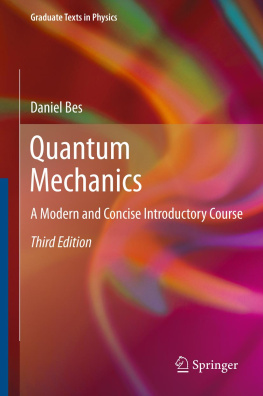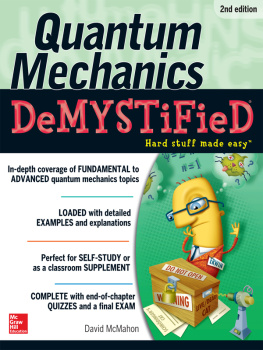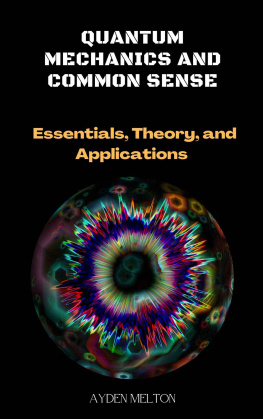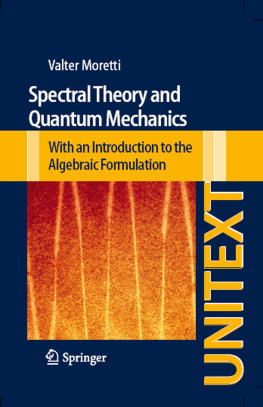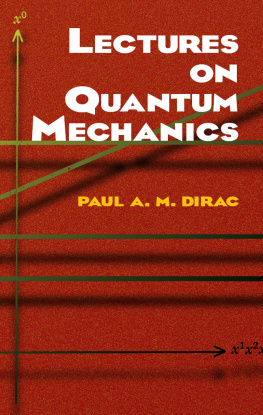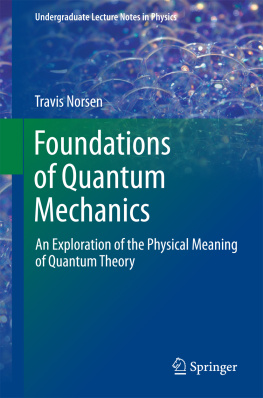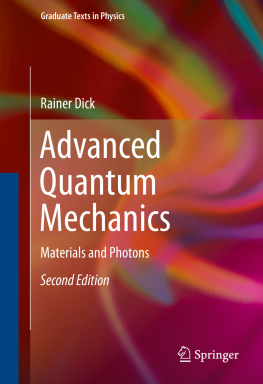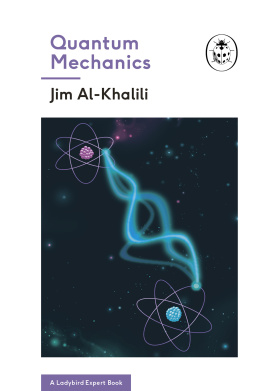Daniel Bes Graduate Texts in Physics Quantum Mechanics 3rd ed. 2012 A Modern and Concise Introductory Course 10.1007/978-3-642-20556-9_1 Springer-Verlag Berlin Heidelberg 2012
1. Introduction
The construction of classical physics started at the beginning of the seventeenth century. By the end of the nineteenth century, the building appeared to have been completed: the mechanics of Galileo Galilei and of Isaac Newton, the electromagnetism of Michael Faraday and James Maxwell, and the thermodynamics of Ludwig Boltzmann and Hermann Helmholtz were by then well established, from both the theoretical and the experimental points of view. The edifice was truly completed when Albert Einstein developed the special and the general theories of relativity, in the early twentieth century.
Classical physics deals with the trajectory of particles (falling bodies, motion of planets around the sun) or with the propagation of waves (light waves, sound waves). The construction of this edifice required intuition to be abandoned in favor of a formalism, i.e., a precise treatment that predicts the evolution of the world through mathematical equations. Classical physics has a deterministic character. The existence of a physical reality, independent of the observer, is an implicitly accepted dogma.
Cracks in this conception appeared around the beginning of the last century. Light waves not only appeared to be absorbed and emitted in lumps (black-body radiation) [].
In 1913 Niels Bohr was able to explain both the stability of the hydrogen atom and the existence of discrete energy levels by means of a partial rejection of classical mechanics and electromagnetism [].
Since the presentation of the Heisenberg and Schrdinger formulations].
I have never thought that this simple wave approach [de Broglie waves and the Schrdinger equation] was acceptable as a general basis for the whole subject.
This approach of presenting both Heisenberg and Schrdinger formulations also pays dividends through the natural appearance of the most quantum of all operators: the spin. In addition to its intrinsic conceptual value, spin allows us to simplify discussions on fundamental quantum phenomena like interference and entanglement, on time dependence (as in nuclear magnetic resonance), and on applications of quantum mechanics in the field of quantum information.
The uncertainty of a presentation may be reduced by increasing the amount of detail, and vice versa. Bohr used to say that accuracy and clarity were complementary concepts (Sect.15.5.1). Thus, a short and clear statement can never be precise. We may go further and state that the product of the indeterminacy inherent in any message () times the amount of details () is always larger or equal than a constant k ( > k ). The quality of textbooks should be measured by how close this product is to k , rather than by their (isolated) clarity or completeness. It is up to the reader to judge how closely we have been able to approach the value k . If we have achieved our aim, a more rigorous and sufficiently simple presentation of quantum mechanics will be available to undergraduate and first-year graduate students.
This book should be accessible to students who are reasonably proficient in linear algebra, calculus, classical mechanics and electromagnetism. Previous exposure to other mathematical and/or physics courses constitutes an advantage, but it is by no means a sine qua non .
The reader will be confronted in with a condensed presentation of Hilbert spaces and Hermitian and unitary operators. This early presentation implies the risk that the reader might receive the (erroneous) impression that the book is mathematically oriented, and/or that he or she will be taught mathematics instead of physics. However, Sects.2.7 and 2.8 include practically all the mathematical tools that are used in the text (outside of elementary linear algebra and calculus, both being prerequisites). Consistent with this physics approach, the results are generally starkly presented, with few detailed derivations. It is the authors contention that these derivations do not significantly contribute to filling the gap between merely recognizing quantum mechanical expressions and learning how to do and feel quantum mechanics. This last process is greatly facilitated by solving the problems at the end of each chapter (with answers provided at the end of the book). The instructor should act as an answerer and motivator of students questions and not merely as a problem solver on the blackboard, to facilitate the filling of the aforementioned gap.
Sections labeled by a dagger display a somewhat more advanced degree of difficulty. The student may leave them for a second reading, unless he or she is specially interested on the subject. An asterisk indicates the mathematical background of material that has been previously presented.
Although the text has been conceived as a whole unit, it also allows for different shorter readings:
If the aim is to operate with the formalism within some particular branch of microphysics (solid state, molecular, atomic, nuclear, etc.), one can progress straightforwardly from for a second reading.
Readers more interested in recent advances on quantum theory and on applications to quantum information may skip (concerning entanglement and its consequences).
A reading with more emphasis on conceptual aspects of quantum mechanics should proceed through .
A brief history of quantum mechanics is presented to acquaint the newcomer with the development of one of the most spectacular adventures of the human mind to date (). It also intends to convey the feeling that, far from being finished, this enterprise is continuously being updated.
References
B.C. Olschak: Buthan. Land of Hidden Treasures . Photography by U. and A. Gansser (Stein & Day, New York 1971).
M. Planck: Verh. Deutsch. Phys. Ges. , 207, 237 (1900).
A. Einstein: Ann. der Phys. , 132 (1905).
A.H. Compton: Phys. Rev. , 483 (1923).
C.L. Davisson and L.H. Germer: Nature , 528 (1927); G.P. Thomson: Proc. Roy. Soc. A , 600 (1928).
H. Geiger and E. Mardsen: Proc. Roy. Soc. A , 495 (1909); E. Rutherford: Phil. Mag. , 669 (1911).
J. Balmer: Verh. Naturf. Ges. Basel , 548, 750 (1885); Ann. der Phys. und Chem. , 80 (1885).
N. Bohr: Phil. Mag. , 10 (1913); , 1 (1913); Nature , 231 (1913).
W. Heisenberg: Zeitschr. Phys. , 879 (1925).
M. Born, W. Heisenberg and P. Jordan: Zeitschr. Phys. , 557 (1926).
P.A.M. Dirac: Proc. Roy. Soc. A , 642 (1925).
E. Schrdinger: Ann. der Phys. , 361, 489 (1926); , 437 (1926); , 109 (1926).
D.F. Styer et al.: Am J. Phys. , 288 (2002).
J. Schwinger: Quantum Mechanics. Symbolism of Atomic Measurements , ed. by B.G Englert (Springer-Verlag, Berlin, Heidelberg, New York 2001) Chap. 1.

